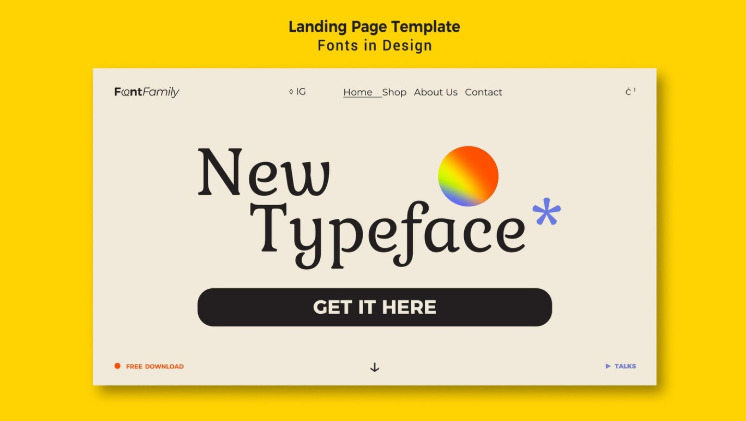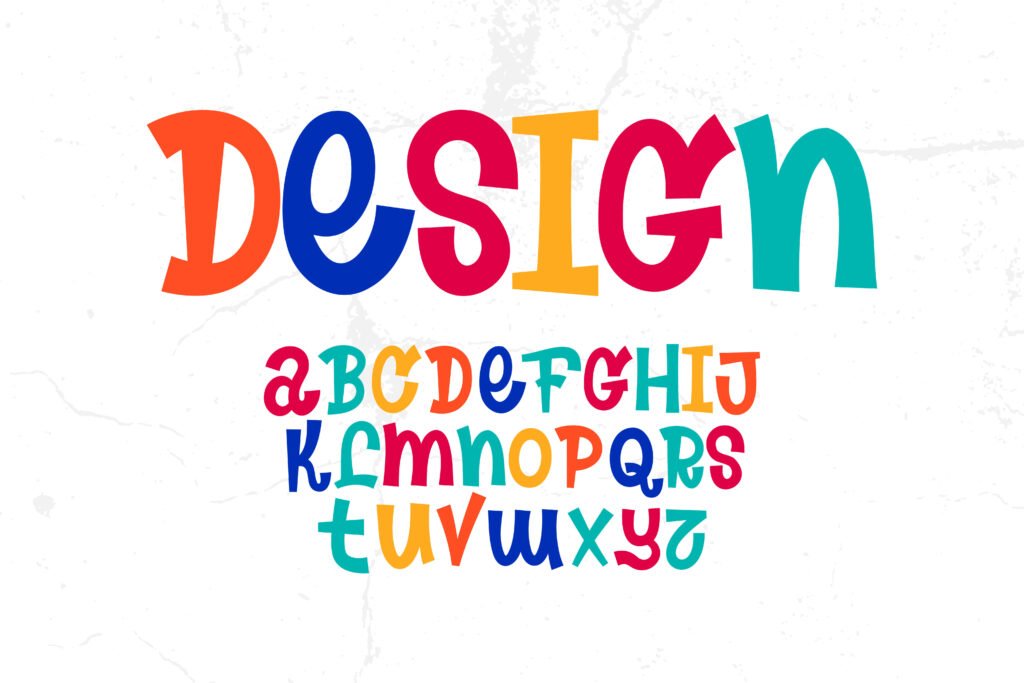Typography is an essential part of web design, either for breaking or making your brand identity as well as user experience. To improve user readability and engagement, and thus resulting in higher conversion statistics, your choice of the appropriate typography will help a lot. A strategic application of typography is more than just about the visual because typography needs to work with the web design structures, it must be planned and executed in a way that will support and complement all the other design manifestations.
Changing the person’s font design can greatly affect the way a person thinks while keeping them emotionally connected as they make their decision outcomes. By studying research from the Nielsen Norman Group, it becomes apparent that easily readable text could be trusted by those visiting a site whereas poorly designed typography can lead to those same users bouncing off and hurting your brand identity.
Professional WordPress web design services incorporate fonts that have clear letterforms with high contrast ratios and adequate size because of their growing popularity. The selection of an attractive font is the first step in designing effective typography. To resonate with your audience, a unified brand approach is required that connects with your audience on a deeper level.
UX & Branding Importance of Font Choice

Your website’s user experience (UX) and brand identity highly depend on your selection of fonts, playing a dual role in shaping your overall presentation. When you pair an appropriate font with your audience’s needs, your brand gains elevation, and your audience connects better, ultimately leading to higher conversions.
The Psychology of Font Choice
Various studies demonstrate that fonts affect human emotions and personality perception, influencing what readers decide to do. For instance:
- Serif fonts including Times New Roman and Georgia deliver traditional professionalism and reliability.
- sans-serif fonts like Helvetica and Arial offer modern and approachable looks with simple characteristics.
- script font styles like Lobster with Pacifico deliver creative and sophisticated design elements that also add elegant style.
Font Choice and UX
The selection of the right font will substantially boost user experience through:
Clear legibility: Readers can easily understand content through fonts with clear legibility since they allow users to quickly scan text.
Visual hierarchy: Utilizing fonts of different sizes and weights and various typefaces creates a visible priority structure, guiding Users to navigate and find the relevant content easily.
Font Choice and Branding
Among all branding elements, the choice of font plays a vital role in establishing your brand identity in the following ways:
Reinforcing brand values and personality: A chosen font enables you to reinforce both your brand values and your personality so that it can express your brand’s tone style and emotional attitude.
Establishing uniqueness: Your establishment will become noticeable within competitive markets because unique specific font selections create brand uniqueness.
Use of same font style: Brand identity will be stronger when using the same font across all client touchpoints, including website platforms, social media channels, and advertising platforms.
Typography Trends in Modern Web Design
The latest typography patterns in contemporary web design enable you to maintain top positions. To elevate your website design, implement modern typography trends, such as:
1. A comeback of Serif Fonts
Web design professionals have revived serif fonts from their previous outdated classification to use them on websites. Your website will gain sophisticated charm through these text fonts. It includes Georgia, Playfair display, and Merriweather.
2. Bold Typography Takes Center Stage
Bold typography has emerged as a popular trend. Common in modern graphic design this trend uses sans-serif fonts to highlight specific text elements visually. It includes Impact, Aerial black, and Montserrat.
3. Variable Fonts Offer Flexibility
Variable fonts have revolutionized Modern web design, enabling you to modify weight levels, stretch, and style characteristics to achieve design freedom. These fonts are Inter-variable, the Merriweather variable, and the Open Sans Variable.
4. Hand-Drawn Fonts Add Personality
Web design currently favors manually created fonts as an important design element. Window shapes show unique charm that adds personality to website pages. It includes Pacifico, a dancing script, and great vibes.
5. Accessibility-Focused Typography
Web accessibility has become essential in web design so typography stands as an essential element. These fonts are Arial, Lato, and Open Dyslexic.
Incorporating Typography Trends into Your Website
The following is a list of recommendations for implementing these typography elements in your website design:
- Limit your font usage to just 2 or 3 pieces to preserve visual coherence.
- Select fonts that reflect your brand personality accurately.
- Your website should have adequate fonts that offer a sufficient size and contrast ratio for accessibility needs.
- Show your font selection to your target audience for the assessment of their emotional connection and the effectiveness of the final design.
Your website design will gain audience appeal by embracing contemporary typography trends and creating visually outstanding interfaces.
Balancing Aesthetics and Readability in Font Selection
While choosing website fonts people must obtain an appropriate equilibrium between looks and legibility. Your brand image gains visual appeal from a suitable font choice that also helps your readers understand your content more easily.
The following elements need assessment when choosing fonts:
Aesthetics
The features of each font style: serif, sans-serif, script, and display are all different. This lets you choose between light, simple, bold, and italic fonts to either emphasize points or speak in multiple monologies. How easily the content can be read always depends on the size of the font. There should be a space between the lines in your content in such a way that your readers can easily comprehend what your message is without any difficulties.
Readability
An important design feature would be clear legible letterforms. A text that has appropriate font and line spacing between lines is easier to read. For this reason, effective reading requires enough color contrast between the text elements and background elements. Using fonts consistently helps to keep the visual flow together and maintain proper readability.
Striking an appropriate balance between the font that’s attractive and easy to read increases the website engagement and the effectiveness of the message of the brand.
How Typography Influences Website Performance & SEO
Web performance as well as SEO influenced typography selection. Learn professional methods to optimize your typography that will boost your website speed and search engine optimization.
The Impact of Typography on Website Performance
Website page loading durations are highly contributed by the font styles files. Additionally, with font loading methods, font file optimization helps improve website speed as well.
Second, as typography plays a part in the responsiveness of Mobile devices they will have performance problems. This delivers a smooth Interface to users because Typography fits the needs of different device sizes.
Third, Website accessibility depends on the selected typography tools. Users with disabilities benefit from typography when fonts have clear readability and sufficient contrasting color schemes.
The Impact of Typography on SEO
This is the reason that search engines prioritize a good user experience by doing this, cause this will enhance the user experience of the website users. Therefore, better usability equals more readability of the page’s typography and this, in turn, leads to better search engine rankings because people don’t just bounce off the pages.
Secondly, Google gets better content semantic understanding due to the application of typography, since it highlights targeted keywords.
Third, appropriate typographical selection makes the web page content more scannable. Last, they are well-defined and go together with sub-headings that have well-defined font dimensions making it easy for easy user to know what has been covered in the content.
Best Practices for Optimizing Typography
The fonts should be selected as web-optimized as they reduce file size and page loading time.
Also, you can select optimal font dimensions with good line spacing so that it can be read easily and be accessible to everyone.
Third, your website must feature clear text designs that remain constant across all pages for better user accessibility and experience.
Plus, your typography must react well in performance tests regarding page speed and SEO assessment and you can enhance it by continuous testing.
Your website performance gets better while user experience improves with your search engine rankings because of optimized typography.
The Role of Professional Web Design in Typography Optimization
Working with experts will provide you with this opportunity:
- The website needs consistent font use throughout all pages and elements.
- When designing content text you should adjust the font dimensions and space between lines with color ratios to enhance readability and make content accessible for all users.
- A website’s visual quality improves when you use designer customization tools for your website typography.
Best Practices for Implementing Custom Typography in Websites
To get the successful implementation of custom typography, the following best practices should be followed.
- When choosing a font at Institutions, one ought to select a font that aligns with the corporate identity of the institution as well as a font that will align with the interest of the target market, however, one ought to select a font, which is easy to read.
- Submit typography must be tested by your target audience and then reworked through multiple iterations until it achieves the desired results.
- Your custom typography needs to follow accessibility requirements, specifically cover sufficient color contrast with clear font sizes.
- Therefore, you should implement methods such as font loading procedures and cache management that should help in improving your custom font performance.
Final Words
In the modern world, web design relies on typography, as it influences user experience quality, brand image, and system speed. The more you focus on typography, the more likely your business will grow, because it increases user engagement and eventually your brand trust.
Effective typography won’t be only choosing attractive fonts because the true meaning of this is those beautiful fonts alone can’t make good typography; there is brand unity with readable interfaces engaging the users. If you focus on typography during the development of web design these outcomes will come to you.
- Proper implementation of your brand identity along with messaging will get elevated.
- With better experience and more user engagement, your business becomes successful in achieving user interaction.
- Business success is achieved through the enhancement of website performance and the increase of conversion rates.
Since the time of high web development, typography has been a fundamental design element that a designer must use when choosing a look for the internet. Optimizing typography in your project will strengthen user connection and create business achievement.
